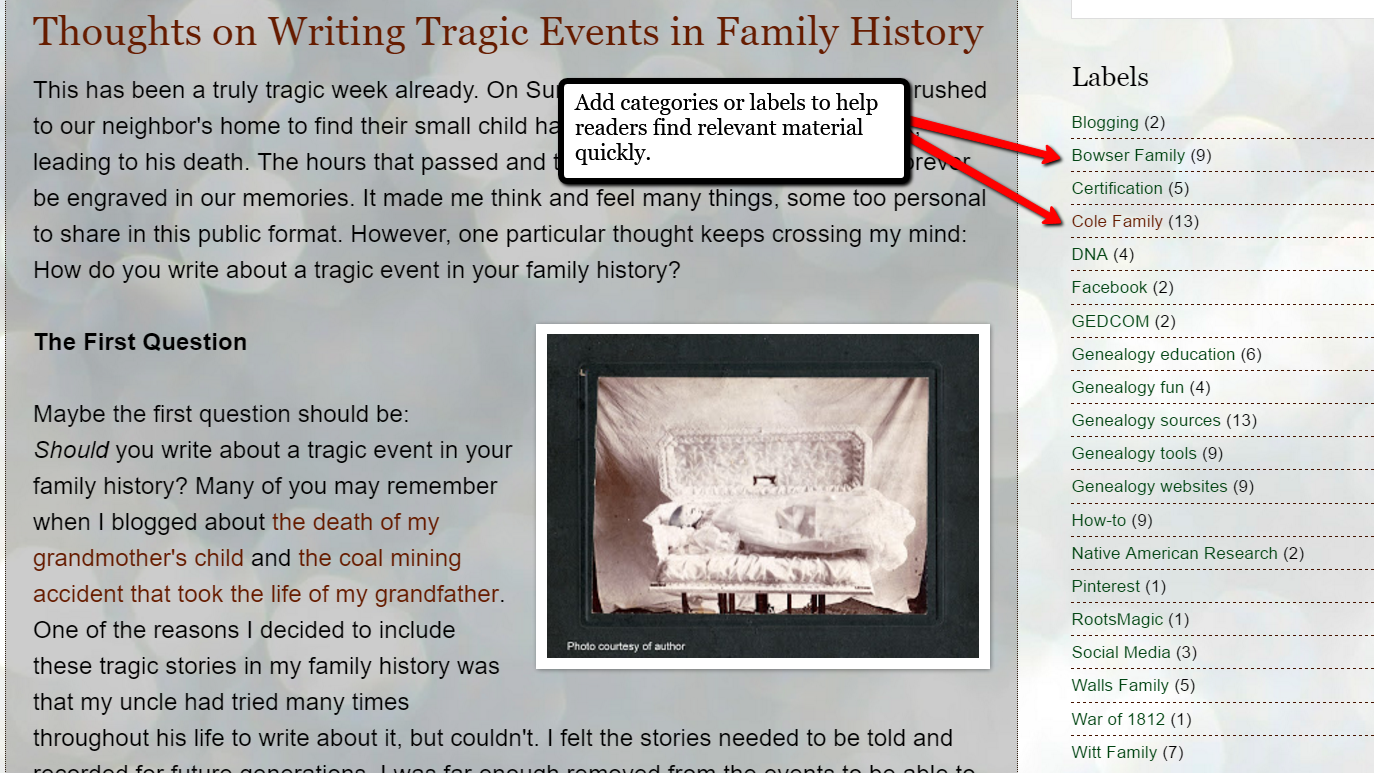by Lisa Cooke | May 24, 2015 | 01 What's New, Canadian, Digital Archives, images, Libraries, Memory Lane, Records & databases
 Do you have Canadian roots? Then Canadiana should be on your list of online resources searched regularly for family history information.
Do you have Canadian roots? Then Canadiana should be on your list of online resources searched regularly for family history information.
Recently Newswire.ca described Canadiana as “a digital initiative of extraordinary scale,…a joint effort of 25 leading research institutions, libraries and archives working together with the goal of creating Canada’s multi-million page, comprehensive online archive.” Its digital collections chronicle Canada’s past since the 1600s and most of its content is free.
What we especially noticed in a recent peek at this enormous Canadian digital archive:
- The Héritage Project. This FREE resource “aims to digitize, preserve and make accessible Canada’s archival materials for Canadians and the world. Héritage is also a pathfinder project to determine the best ways to organize and fund ongoing efforts to make all of Canada’s remaining documentary heritage accessible online.” Their large collection of genealogy materials so far includes immigration records, church records, land records, family histories, voters’ lists and more. Military history, government documents and aboriginal records are also well-represented. Tip: check back often! More is coming, like local and regional newspaper digitization and records of the Canadian Expeditionary Forces.
- The Canadiana Discovery Portal. This gateway to digital collections from 40 repositories points to 65 million pages! Sample subjects include Ontario genealogy and War of 1812 campaigns. This portal is also free to use.
- Early Canadiana Online, with 5 million images already and expected to grow to 16 million. This part of the website requires a subscription ($10/month or a year for $100) This is “a full-text collection of published documentary material, including monographs, government documents, and specialized or mass-market periodicals from the 16th to 20th centuries. Law, literature, religion, education, women’s history and aboriginal history are particular areas of strength.” The site describes itself as “the most complete set of full-text historical content about Canada, including books, magazines and government documents.” Tip: scroll down on the home page to click the Genealogy and Local History portal, but don’t ignore the rest of the site!
 Like this post? Here’s a few more posts you may enjoy:
Like this post? Here’s a few more posts you may enjoy:
If more posts like these are what you’re looking for, sign up for our free email newsletter. You’ll get Lisa Louise Cooke’s free Google Research e-book when you do! From our home page, enter your email in the sign-up box.
by Hannah Fullerton | Jul 16, 2018 | 01 What's New, Inspiration, Travel
My daughter Hannah is an adventurer at heart, and turns drives to genealogy conferences into trips to remember. This summer, be sure to make memories with living relatives! Have a wonderful week! -Lisa About the Author: Lisa Louise Cooke Lisa is the Producer and Host...
by Lisa Cooke | Feb 3, 2018 | 01 What's New, Heirloom, Organization
If you may fit the description of a “genealogy hoarder,” you should read this letter from Roland. He shares a powerful story about being generous with our genealogical treasures. (P.S. Sharing family history items can also help you declutter your genealogy files!) I...
by Lisa Cooke | Oct 17, 2016 | 01 What's New, Blogs, Listeners & Readers, Writing Family History |
Creating and maintaining a genealogy blog is a fun and rewarding way to share your family history. Blogging is also effective in finding cousin connections! If you are worried your blog isn’t pulling in the cousins you expected, elevate your ranking in search results by implementing these 3 ways to improve your genealogy blog.

I recently received this exciting email from Ruth:
“Thank you, thank you, thank you! Several months ago, I attended one of your all-day seminars in Bossier City, Louisiana and I must thank you for motivating me!
I’ve been researching my family tree off and on for 25 years or so, and at times it has taken a back burner to whatever was going on in my life; only to be dusted off when I would get an inquiry or perhaps when someone in the family passed away. In the last 3 years, I have been attending these local seminars with a distant cousin. They were fun and I learned a few things, but none had generated the enthusiasm that I have at the moment!
The knowledge that you share and the easy manner in which you deliver your presentations are so down-to-earth and it inspires me to learn more. I left your seminar with a Premium Membership package and I have been listening to your podcast ever since.
You also encourage your readers to blog about their genealogy. I took your advice and I’ve done just that. Please take a look at my blog – any suggestions you might have would be welcomed. The title is My Family Tree: Hobby or Addiction? and I have dedicated it to my father who passed away in 2005! Here is the link: http://myfamilytreehobbyoraddiction.blogspot.com/
Thank you again for all you do that encourages us and for the new tools that you share with your listeners to help their journey along the way!
Many thanks,
Ruth Craig Estess”
Ruth, thank you and congratulations!

I love hearing how you have put it into action what you learned at the seminar.
Tips for Improving Your Genealogy Blog
Ruth is doing a terrific job including family information on her genealogy blog that others might be Googling. That means they are very likely to find her. But there’s more that can be done. Here are 3 additional tips for Ruth and anyone who wants to get more traction with their genealogy blog:
“1. Add more images. Google looks postively upon websites that have images. It considers the website to be more of an authority on the subject covered in the blog. Images improve Search Engine Optimization (SEO.) In layman’s terms, SEO refers the ways in which you have made your blog easy to use, and easy for Google to understand what it is about. The better Google understands the subject, the better chance it has of delivering your blog as a result when people search on things you write about (like your family tree!) It’s important that your image files have names that accurately reflect what they and your blog post are about. Therefore, it’s a solid strategy to include relevant genealogical information such as names, places and dates in the image titles. If you don’t happen to personally have photos about the subject of your blog post, include images of documents or other related items.
2. Include a Call to Action. At the end of each post, invite your readers to comment and contact you if they are researching the same family. It’s amazing what a little invitation will do to prompt interaction. If you skip this step, your readers may just “lurk”, or in other words, quietly read and then go on to the next website. That’s a missed opportunity for connection and collaboration. Even though a reader may be researching the family you are writing about, they may not think to reach out to you or comment unless you prompt them to do so.
3. Make use of blog categories. Categories and Labels help organize you blog content. Create a category for each surname you discuss on your blog. The category can appear in the side column on your blog. That makes it easy for readers to click a surname they are interested in and jump directly to your posts that discuss that name.”

Categories and Labels are great for SEO too. Google loves well-organized websites because they are easier to understand and deliver in search results.
More Gems on Creating Your Own Genealogy Blog
Ruth wrote to tell me she has already started putting these ideas into practice. She’s on her way to rising in the search results and hearing from distant cousins. How exciting! Click below to continue reading about rewarding and effective family history blogging.
Why Marketing Experts Would Agree That You Should Write a Family History Blog
Why and How to Start a Family History Blog
Genealogy Blogging, the Future of Genealogy and More
Tell Us About Your Genealogy Blog
Do you have a genealogy blog? Well, here’s my call to action! Please share your family history blog, SEO tips, and success stories in the comments area below.
And I would so appreciate it if you would share Genealogy Gems with your friends and blog readers by including a link to our website in your list of favorite genealogy help sites on your blog. Thanks!
 Do you have Canadian roots? Then Canadiana should be on your list of online resources searched regularly for family history information.
Do you have Canadian roots? Then Canadiana should be on your list of online resources searched regularly for family history information. Like this post? Here’s a few more posts you may enjoy:
Like this post? Here’s a few more posts you may enjoy:






